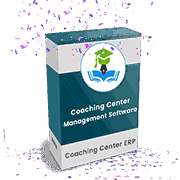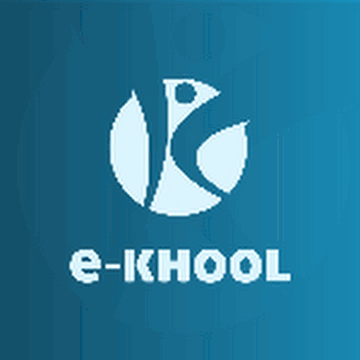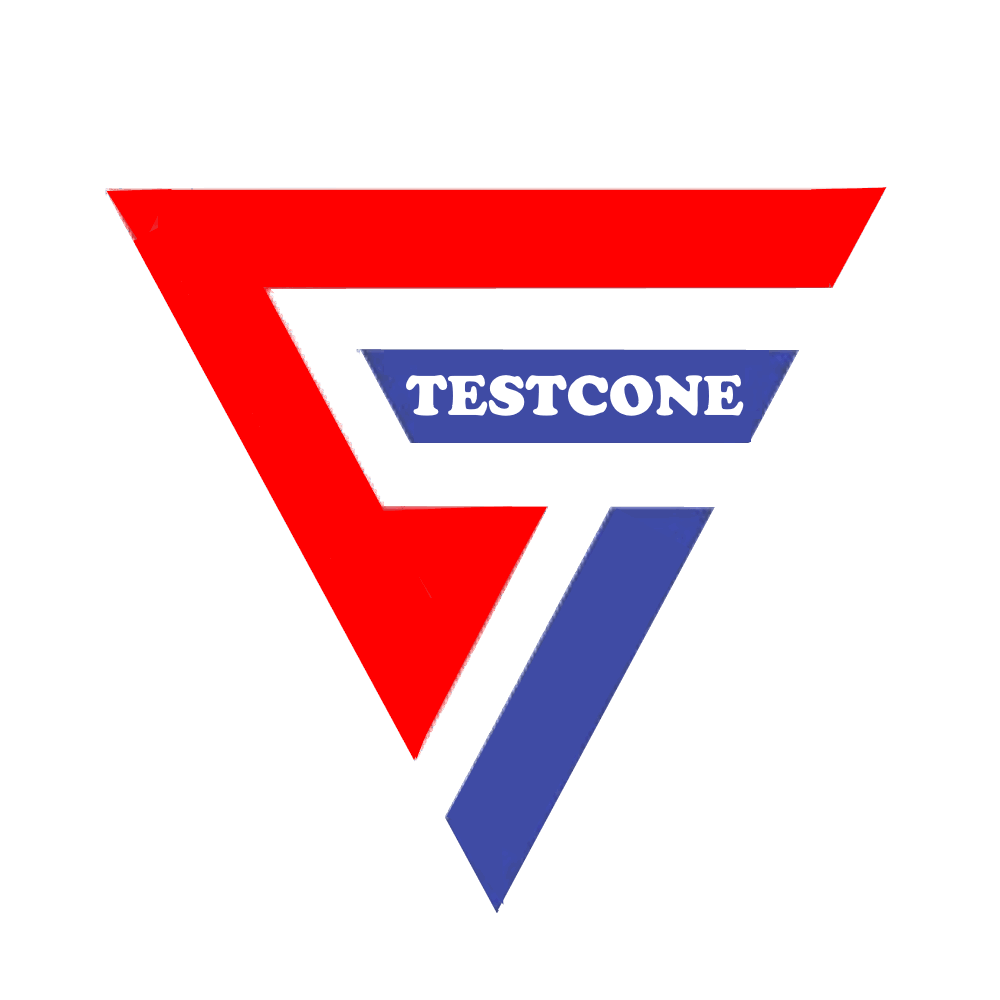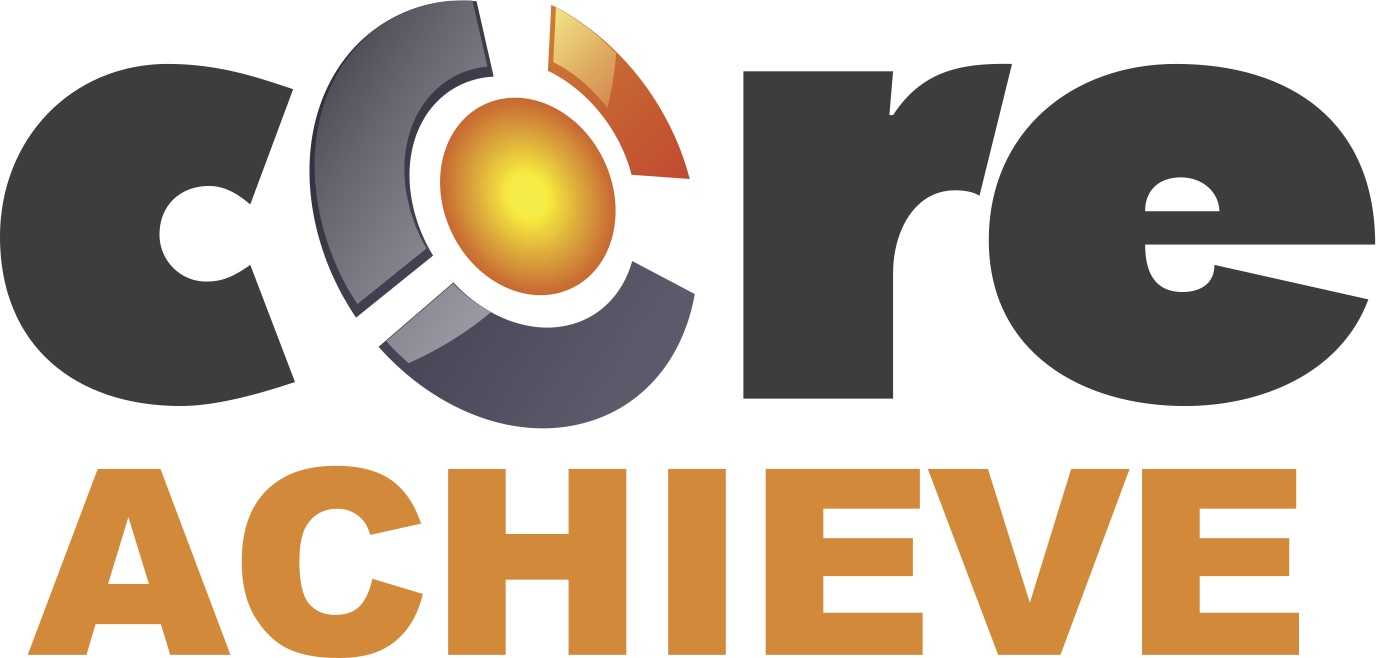Indeed, the majority of eLearning software available today is made to work with a variety of platforms and devices, including tablets, smartphones, laptops, and desktop PCs. This enables users to access their course materials and the software at any time and from any location. To make sure the eLearning software is compatible with the devices and operating systems you intend to use, it is crucial to review its system requirements.
List of 20 Best eLearning Software
Dokeos is a Learning Management System that caters to regulated industries. It provides a variety of customizable online training, evaluation, and certification options. The Dokeos Live feature makes it effortless for users to host webinars and acces...Read More Dokeos
TexVoz is a Text to Speech software designed to transform written content into realistic audio using a range of natural voices. Elevate your content with high-quality voices that will captivate your audience and bring your words to life. From audiobo...Read More TexVoz
Edusys Coaching is a online institute management software for coaching institutes offering courses like SSC, IAS, IIT, MAT, CAT, and more. With its array of modules for fee management, online assessments, and course selection, Edusys Coaching simplif...Read More Edusys Coaching
Coursera: a online learning platform featuring an extensive selection of courses from prestigious universities. Its user-friendly interface and expert instructors provide the flexibility for individuals to learn at their own convenience and receive c...Read More Coursera
Simpliv is an advanced online learning platform dedicated to empowering individuals in reaching their personal and professional aspirations. Packed with a comprehensive video library covering a wide range of business concepts and software technology,...Read More Simpliv
Duolingo is a e-learning platform that provides free language learning services. For those seeking an ad-free option, there is a premium version offered. As a globally acclaimed and certified program, Duolingo is trusted by millions of users worldwid...Read More Duolingo
VSmartEngine LearnHub is ae-learning solution that revolutionizes online education. Our platform streamlines content delivery, assessments, and interactive activities to provide a seamless learning experience. Engage learners effortlessly and facilit...Read More VSmartEngine LearnHub
Blooket is a gamification platform specifically tailored for educators and students. It features an array of interactive activities that can be played both in a group setting and individually. Through a subscription service, teachers have access to s...Read More Blooket
360Learning is an innovative learning platform that harnesses the power of AI to transform your companys internal experts into valuable L&D collaborators. Our solution streamlines compliance training, onboarding for new employees, and sales readiness...Read More 360Learning
UpsideLMS, the innovative Cloud-based Learning Management System designed by Invince. Packed with advanced features such as AI technology, Gamification, Blended Learning, ILT, Virtual Classroom, and Mobile Learning, this platform is ideal for enterpr...Read More UpsideLMS by Invince
Savv-e is an innovative eLearning platform that transforms traditional training techniques through engaging digital courses. By providing intuitive tools and customizable options, Savv-e empowers businesses to create dynamic and immersive learning so...Read More Savv-e
MegaExams solution for hassle-free test creation. Our platform provides access to a comprehensive question bank of over 500,000 questions for a variety of competitions. Students can take tests from any location and receive real-time result updates. S...Read More MegaExams
Studypool is a online software that links students seeking academic aid with experienced tutors. It strives to assist students in managing difficult tasks and maintaining their interest in academic subjects. With a wide range of proficient tutors, St...Read More Studypool
GoSkills is a LMS and LXP that equips businesses with a unified platform for creating and delivering engaging learning experiences. By providing a wide range of powerful tools, GoSkills simplifies the management of training programs and boosts employ...Read More GoSkills
e-khool LMS is a customizable learning platform for enterprises, schools, universities, and training institutes. Our software provides a branded training and learning portal that will enhance your online education offerings. With advanced features fo...Read More e-khool
Tutorix - a self-paced learning platform crafted for CBSE students. Through its use of 2D and 3D visuals, real-world activities, and interactive exercises, Tutorix revolutionizes the way mathematics and science are taught. Immerse yourself in the lat...Read More Tutorix
CleverGround LMS is a EdTech platform designed to enhance the digital capabilities of Educational Institutions of any scale. Our all-in-one centralized Learning Management System empowers you to effortlessly deliver courses across multiple centers. S...Read More CleverGround
Pocket Study LMS is a Learning Management System that comes with a mobile app and creative teaching approaches to enrich learning. It acts as a unified platform for efficient content distribution in a well-structured layout. Embrace the ease and effe...Read More Pocket Study LMS
TestCone is a cloud-based LMS perfect for e-learning, training, testing, and evaluations. Developed for corporations, training agencies, individual trainers, learning specialists, and end-users, TestCone provides customized workflows for every type o...Read More TestCone
CoreAchieve LMS is abudget-friendly and cutting-edge e-Learning SaaS platform. Subscribe to our platform and instantly access its robust features. Our all-in-one solution caters to all your online training and learning requirements. Discover the conv...Read More CoreAchieve LMS
Learn More About eLearning Software
- What Is ELearning Software?
- What Are The Recent Trends In ELearning Software?
- Benefits Of Using ELearning Software
- Important Factors To Consider While Purchasing eLearning Software?
- What Are The Key Features To Look For In Elearning Software?
- Why Do Businesses Need eLearning Software?
- How Much Time Is Required To Implement Elearning Software?
- What Is The Level Of Customization Available In Elearning Software?
- Which Industries Can Benefit The Most From Elearning Software?
- Conclusion
What Is ELearning Software?
Any digital platform or application that helps people or organizations to design, deliver, and oversee training courses, educational materials, or training programs is referred to as eLearning software, sometimes known as online learning or digital learning software. Learning Management Systems (LMS), authoring tools, virtual classrooms, and content management systems are just a few of the software programs that combine to provide an interactive and captivating online learning environment.
The primary goal of eLearning software is to offer a convenient and adaptable method of learning new information and skills online. E-learning software has become a vital tool for companies, educational institutions, and individual learners due to the growing demand for professional development and distant learning. The capacity of eLearning software to provide individualized and self-paced learning experiences is one of its primary characteristics.
Students have the freedom to learn at any time and from any location because they can access the course materials at their own pace and convenience. Because of this, eLearning software provides an affordable and time-efficient way to train and upskill staff, students, or individuals. Additionally, to improve the learning process and maintain student interest, eLearning software provides a range of interactive multimedia components, including games, simulations, movies, and quizzes.
Along with providing real-time feedback and assessments, these technologies enable teachers to monitor the performance and growth of their students. Selecting an eLearning platform that fits your unique learning objectives and needs is crucial when thinking about eLearning software. The platform's capabilities, usability, pricing, support, and interoperability with various devices and operating systems are some important considerations.
What Are The Recent Trends In ELearning Software?
The eLearning industry has experienced tremendous expansion and advancement in recent years, which has resulted in the emergence of several trends in the eLearning software market. Regardless of your company's size small, large, or educational there are a few important themes to consider when thinking about investing in eLearning software:
1. Personalized Learning Experiences: As technology has developed, eLearning software has changed to offer more customized learning opportunities for every user. Each user's unique demands and learning style can be catered for by eLearning programs that employ data and analytics to customize the learning path and content.
2. Gamification: The incorporation of gamification components into eLearning software is another fascinating trend. Points, badges, and leaderboards are examples of game-like elements that can be used into eLearning programs to make learning more fun and engaging for users, which will improve information retention.
3. Mobile Compatibility: ELearning software has become more mobile-friendly in response to the growing trend of individuals using mobile devices for their educational needs. To guarantee that students may access the material at any time and from any location, it is crucial to select an eLearning application that works with a variety of gadgets, including smartphones and tablets.
4. Microlearning: Users may find traditional eLearning applications daunting due to their extensive courses and modules. Microlearning, which provides bite-sized informational pieces that are simpler for learners to absorb and retain, has become more popular as a result of this. To keep users interested and motivated, look for eLearning software that provides microlearning possibilities.
5. Artificial Intelligence (AI): Software applications that use AI to offer more sophisticated learning experiences have entered the eLearning space. AI is a crucial tool for increasing the efficacy of eLearning programs since it can evaluate user data, spot knowledge gaps, and design individualized learning paths.
Benefits Of Using ELearning Software
With so many advantages for both students and teachers, eLearning software has grown in popularity as a tool for contemporary education and training. Investing in eLearning software can have a number of advantages for both individuals and organizations seeking better staff training or personal growth. In this buyer's guide, let's examine the main advantages of utilizing eLearning software.
1. Accessibility: ELearning software is a readily available choice because it allows anyone with an internet connection to view the course materials. This makes it possible to access course materials from any location in the world and to set up flexible learning schedules.
2. Economical: Conventional training and education approaches can be expensive, involving costs for textbooks, travel, and lodging. These costs are removed by eLearning software, which makes it a more affordable choice for both individuals and businesses.
3. Customization: ELearning software allows users to alter course materials to suit their own requirements. While teachers can adapt the content to certain knowledge gaps and learning objectives, students are free to move at their own pace and select the subjects that are most pertinent to them.
4. Interactive Learning: In contrast to conventional teaching techniques, eLearning software includes interactive components including games, simulations, and quizzes. This improves information retention by making the learning process more interesting.
5. Instant Response: ELearning software gives students immediate feedback on tests and quizzes, enabling them to pinpoint their areas of strength and weakness. To ensure a more effective learning environment, instructors can also monitor students' progress and step in when needed.
6. Scalability: eLearning software provides enterprises with scalability, meaning it can support a big number of users at once. Because of this, it is an affordable choice for businesses with a sizable workforce or those want to expand their training initiatives.
7. Time-Saving: ELearning software provides a more effective learning experience than traditional education and training techniques, which frequently call for a large time investment. Both individuals and companies can save a great deal of time with features like self-paced learning and on-demand access to course materials.
8. Real-World Application: ELearning software makes it possible to include case studies and real-life settings, giving students hands-on experience and the opportunity to put what they've learned into practice.
Important Factors To Consider While Purchasing eLearning Software?
Potential customers should take into account a number of crucial considerations while buying eLearning software. Selecting a platform that fits your unique requirements and objectives is essential because not all software is made equal. Here are some important considerations to make while choosing, whether you're a company trying to train your staff, an instructor trying to improve your online teaching techniques, or an individual trying to increase your knowledge and abilities:
1. User-Friendly Interface: The eLearning software's usability is one of the most crucial aspects to take into account. Both the teacher and the students' entire learning experience will be improved by an intuitive, user-friendly interface.
2. Accessibility: This is crucial in the digital world of today. Make sure the eLearning software you choose is compatible with a variety of platforms, including laptops, tablets, and smartphones. This guarantees that students can access the platform at any time and from any location, allowing for flexibility and convenience.
3. Customization Options: The demands and objectives of each individual or organization's eLearning content vary. Selecting software that allows for customization is therefore essential if you want to modify the material to meet your unique needs. Look for features like the opportunity to contribute your own material, branding options, and templates that can be customized.
4. Interactive Features: Effective eLearning requires interesting and dynamic content. To add excitement and enjoyment to the learning process, look for software that includes activities like games, polls, quizzes, and simulations.
5. Content Library: Another important consideration is the eLearning software's content library. To accommodate various learning styles, make sure the platform provides a variety of content, such as text, photos, videos, and audio.
6. Analytical Tools: Having access to analytical tools is crucial for assessing the success of any eLearning program. To monitor learner progress, spot knowledge gaps, and make the required content changes, look for software that offers comprehensive analytics and reporting.
7. Training And Support: Although eLearning software is meant to be easy to use, it's always beneficial to have access to training and support as required. To guarantee a seamless learning process, confirm that the software provider provides thorough training, tutorials, and technical support.
8. Cost: As with any purchase, the price is an important consideration. Seek out software solutions that provide adjustable pricing structures to meet your requirements and budget. Remember that the least expensive option might not always be the best one, so take into account the software's features and capabilities.
What Are The Key Features To Look For In Elearning Software?
Knowing the essential components of a top-notch and successful platform is essential for anyone wishing to invest in eLearning software. Selecting the best eLearning software to suit your organization's needs is crucial given the growing demand for online training and remote learning. Therefore, the following are the most important qualities to think about before buying:
1. User-Friendly Interface: A user-friendly interface is the first and most important element to search for in eLearning software. In order to facilitate learners' engagement with the content, the platform should be visually appealing, straightforward, and simple to use.
2. Compatibility: It is essential to make sure that the eLearning software is compatible with a range of platforms, including PCs, laptops, tablets, and mobile phones, given the variety of devices and operating systems in use. This guarantees that all users may easily access the platform and permits flexibility in learning.
3. Customization Options: Since every company has different training requirements, the eLearning platform ought to offer customization choices. This enables you to customize the platform to meet your unique needs, including those related to user preferences, course content, and branding.
4. Content Creation And Management: To create, upload, and manage course content, the eLearning software should come with built-in tools and functionalities. Multimedia alternatives like pictures, movies, and interactive components are used in this to make the learning process interesting and successful.
5. Assessment And Feedback: One essential component of eLearning software is the capability to monitor and evaluate students' progress. Choose a platform that gives trainers and students thorough feedback in addition to a range of assessment choices, including surveys, assignments, and quizzes.
6. Gamification: This popular eLearning software feature makes learning more engaging and dynamic. This entails motivating and retaining students by utilizing game-like features like leaderboards, badges, and points.
7. Assistance And Customer Service: Just like with any software, there may be technical problems, therefore having trustworthy customer assistance is crucial. Seek out eLearning software that provides administrators and users with 24/7 support, troubleshooting, and training.
8. Integration Capabilities: To improve the learning experience, the eLearning software should be able to interact with other tools and systems, such as virtual classrooms, video conferencing platforms, and learning management systems (LMS).
Why Do Businesses Need eLearning Software?
To stay ahead in the cutthroat economic world of today, you must continuously improve your knowledge and abilities. eLearning software can help with that. It is an effective tool that enables companies to offer thorough training and educational resources to their staff. This improves overall performance and production in addition to helping to upskill the workforce.
The adaptability of eLearning software is one of the primary reasons why businesses require it. The training materials are available to staff members at any time, location, and pace. This removes the need for face-to-face instruction, which may be expensive and time-consuming. A range of dynamic and captivating learning resources, including movies, tests, and simulations, are also provided by eLearning software, which enhances the effectiveness and enjoyment of training. The affordability of eLearning software is still another important advantage.
It saves a lot of money by doing away with the requirement to send staff members to conferences or hire outside trainers. Additionally, companies can tailor the training materials to meet their unique requirements, enabling them to concentrate on the information and abilities pertinent to their sector. Businesses may also monitor the performance and advancement of their staff with eLearning software. This enables focused and individualized instruction by offering insightful information about their strengths and shortcomings.
Additionally, it aids companies in identifying top performers who may be developed into leaders, hence accelerating their advancement. Finally, eLearning software makes it simple and effective to update the course materials. This is especially helpful in fields like technology and healthcare that are always changing. Businesses can save time and money by updating the information on the eLearning platform rather than having to retrain staff members whenever there is a new development.
How Much Time Is Required To Implement Elearning Software?
A number of variables can affect how long it takes to implement eLearning software. Your organization's size, complexity, and the type of content you need to publish to the program are some of the primary determinants. Implementing eLearning software often takes a few weeks for small businesses with simple content, but it may take several months or longer for larger enterprises with more complicated content.
Additionally, how long it takes to integrate eLearning software may also depend on how prepared and cooperative your team is. It might take less time to convince your team to use the program if they are already tech-savvy and at ease learning new systems. The degree of integration and customization needed is another crucial factor.
The implementation procedure could take longer if you need to modify the program to meet your unique requirements or combine it with other systems. It's also important to remember that eLearning software implementation is a continuous activity. The success and efficacy of the program will also depend on continuing maintenance, upgrades, and user input, even though the initial setup and launch may take some time.
Implementing eLearning software might take a variety of amounts of time, but in order to give an accurate estimate, it is crucial to carefully evaluate the demands of your company and ascertain the degree of customization and integration needed. To guarantee a successful and seamless implementation process, it is best to collaborate closely with the software vendor.
What Is The Level Of Customization Available In Elearning Software?
Customization is a crucial consideration for purchasers of eLearning software. Depending on the particular product and its capabilities, different eLearning software offers different levels of customization. Nonetheless, the majority of eLearning software provides a great degree of flexibility, enabling instructors and content producers to adapt the learning process to their unique requirements and objectives.
The capacity to design and modify courses is one of the primary customizable features of eLearning software. This covers adding and modifying material in addition to selecting the format, layout, and design. Additionally, a lot of eLearning software comes with templates and themes that may be altered to fit the branding and aesthetic of the company or user.
The capacity to give pupils a personalized learning experience is another facet of personalization. Individual learning pathways, tailored tests, and adaptive learning tools that modify the material and degree of difficulty in response to the requirements and progress of each student are a few examples of this. Additionally, some eLearning programs provide customizable gamification features, such leaderboards and medals, to inspire and involve students.
Additionally, learning analytics and reporting may frequently be customized using eLearning software. In addition to creating bespoke reports to collect data on certain areas of interest, educators can monitor and evaluate the performance and progress of their students. Future course design and delivery tactics may benefit from this. It is crucial to remember that different eLearning software programs may offer varying degrees of customisation.
While some might have fewer functionality, others might provide more extensive customizing possibilities. Finding the eLearning program that best suits your unique requirements and objectives requires careful investigation and comparison of several options.
Which Industries Can Benefit The Most From Elearning Software?
The way we approach learning and development in the current world has been completely transformed by eLearning software. Since it provides an economical and effective solution for a range of training requirements, this software has become the preferred option for numerous sectors due to its interactive and adaptable features. Businesses seeking to improve the knowledge and abilities of their workers have found that eLearning software is a useful tool for compliance training, employee onboarding, and skill development.
1. Corporate Sector: One of the main groups that gains from eLearning software is the corporate sector. The need for effective and easily available training solutions grows as companies continue to expand internationally. Employers can teach staff members remotely with eLearning software, which is convenient and economical for both sides. Additionally, businesses can customize training modules to fit their unique learning objectives, creating a very successful training program.
2. Education Industry: The education industry has also been impacted by eLearning software. As online learning has grown in popularity, eLearning software has become an essential resource for both educators and learners. It enables teachers to produce dynamic and captivating educational resources, enhancing the learning experience for pupils. E-learning software is a popular option for distance learning programs because it gives students the freedom to access course materials from any location and learn at their own speed.
3. Healthcare: Providing patients with high-quality care in the healthcare sector requires ongoing training and knowledge update. A practical and affordable way to conduct training programs and keep medical personnel up to date on the newest methods and procedures is through eLearning software. Medical personnel can practice and enhance their abilities with the help of eLearning software's interactive elements, which improves patient outcomes.
4. Retail: Employee training on sales tactics, product expertise, and customer service is essential for company success in the retail sector. Retail companies may train their employees on a variety of topics using eLearning software, which offers a thorough training platform that results in reliable and superior customer care. Additionally, retail staff members may access training materials while on the road thanks to eLearning software, which benefits the company and the employee alike.
Conclusion
To sum up, the success of your online learning endeavors depends on your choice of eLearning software. Making the best choice might be difficult when there are so many options on the market. However, you may reduce your options and choose the program that best suits your demands by taking into account important variables like price, features, ease of use, customization, and customer support.
Before deciding, it's crucial to do extensive study and evaluate several software solutions. Use the free trials and demos that vendors provide to experience the features and interface of the software up close. Reading reviews and getting feedback from other users can also give you important information about the software's advantages and disadvantages.
To guarantee the seamless adoption and use of the eLearning software, make sure to put in place a training program for your staff and teachers after you have chosen the one that best suits your needs and goals. The long-term success of the program will also be influenced by routinely assessing its efficacy and making the required modifications.
Remember that the eLearning software you select will have an effect on your company's financial performance in addition to the experience of your students. In order to make the best selection for your business or educational institution, you need devote time and resources to this decision. We hope that the information and advice in this buyer's guide has been helpful to you in choosing the finest eLearning program for your requirements.
eLearning Software FAQ's
Can Elearning Software Be Accessed Across Multiple Devices And Platforms?
Is Elearning Software Future-Proof And Adaptable To Emerging Technologies Like Ai, Blockchain Or Iot?
Indeed, eLearning software is made to be flexible and future-proof, responding to new technologies such as blockchain, artificial intelligence, and the Internet of Things. These software programs are updated frequently to take advantage of the most recent developments in technology. Additionally, they offer compatibility and integrations with various platforms and devices, guaranteeing smooth content delivery.
E-learning software can improve learning outcomes by personalizing learning experiences and offering real-time feedback through the use of technologies like artificial intelligence. All things considered, eLearning software is adequately prepared to adapt to the rapidly evolving digital environment.
Is There A Free Trial Offered To Assess eLearning Software Before Committing?
Indeed, the majority of eLearning software suppliers provide a free trial so that customers can evaluate the features and operation of the program before making a purchase. This enables prospective customers to experience the program and decide on the best option for their needs.
Free trials usually last between seven to thirty days, which gives consumers ample opportunity to test the software's features and see if it suits their needs. To make sure the software is a good fit for your eLearning needs, it is always advised to take advantage of a free trial before committing.
Does Elearning Software Offer Data Security Features And Meet Regulatory Compliance Standards?
Indeed, data security features like encryption, access controls, and data backups are available in eLearning software to guarantee the availability, confidentiality, and integrity of sensitive data. Additionally, in order to preserve legal compliance and safeguard user data, the majority of eLearning software suppliers adhere to regulatory requirements including FERPA, GDPR, and HIPAA.
As a result, businesses may utilize eLearning software for training and development with confidence and without fear of data breaches or legal repercussions.
Can ELearning Software Integrate Seamlessly With Existing Tools And Platforms?
Indeed, the majority of eLearning software is made to easily interface with already-existing platforms and tools. This improves and streamlines the learning process by allowing users to access all of their resources in one location. Furthermore, eLearning software can be tailored to meet the unique requirements and operational procedures of various businesses. Because of this, companies may easily and seamlessly integrate eLearning into their current training initiatives.






















